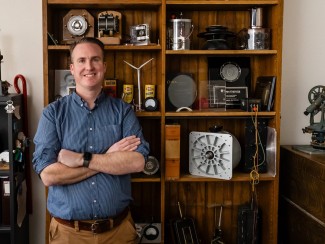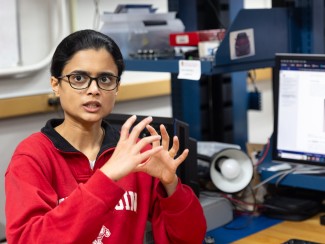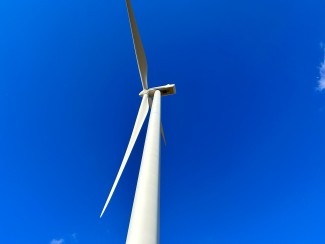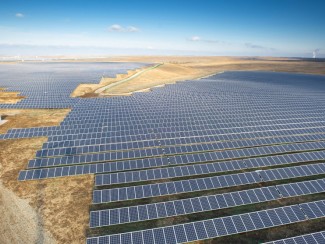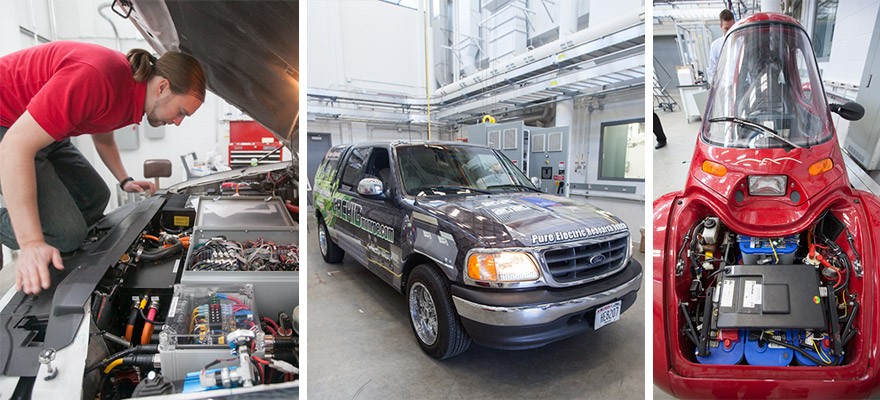
Driving the 2002 Ford-150 truck that UW-Madison graduate student Phil Kollmeyer converted from a conventional gasoline vehicle to an electric vehicle may be the quickest way to grasp the incredible amount of work that went into this ambitious research project.
As I back up, accelerate or make a left-hand turn, Kollmeyer – an engineer by training and an optimist by nature – identifies and explains every sound the truck makes while alluding to future improvements and more refinements, the continuous process of tuning. Though the truck may be electric, it’s clear that Kollmeyer’s passion for the project has been an equally important driving force.
“It really was one of those projects where most mere mortals would have given up long ago just after recognizing the amount of work it was going to be. But Phil’s not that kind of guy,” says Tom Jahns, UW-Madison professor of electrical and computer engineering and Kollmeyer’s doctoral research supervisor. Jahns is also co-director of UW-Madison’s university-industry partnership, the Wisconsin Electric Machines and Power Electronics Consortium (WEMPEC). Orchid Monroe, a Wisconsin-based manufacturing company, and WEMPEC sponsored the truck project.
Founded in 1981, WEMPEC is the oldest and largest public-private industry partnership devoted to electric machines and power electronics. Any company seeking to expand its understanding of electric power and technologies can join the consortium by becoming a sponsor, and in return gain early access to the UW-Madison’s research results and talented pool of graduate students. Additionally, sponsors benefit from heightened industry visibility among the consortium’s 88 company sponsors, an impressive roster that includes major vehicle manufacturers such as Ford, John Deere, and Toyota.
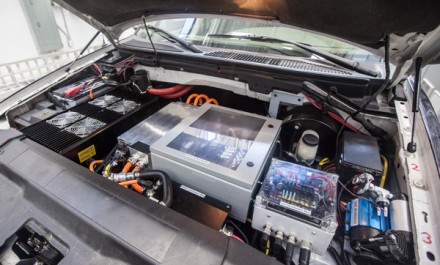
Orchid Monroe first approached WEMPEC about sponsoring a project in 2010. A manufacturer of metal stampings, steel laminations, and assemblies primarily for the automotive and electric motor industries, Orchid was looking to learn more about electric machines and power electronics as part of its expansion into manufacturing prototype electric traction drive systems for buses and other large vehicles. Eventually, Orchid Monroe chose the most ambitious project WEMPEC offered: converting a gasoline truck to electric propulsion.
“To be honest, I thought it was a little crazy at first,” Kollmeyer recalls. “In a truck, everything’s got to be bigger. You need more battery capacity, a larger motor, and they’re not aerodynamic so they use a lot more energy per mile.”
But the project offered a way for Orchid Monroe to create a test bed for its own interests in large vehicle applications and technology, as well as a way for UW-Madison researchers to create a capacious research vehicle, one with long-term value for any number of future UW-Madison research projects in electric machines and vehicles.
The nearly two-year project began at Orchid Monroe, which facilitated purchasing a rust-free F-150 truck from Texas and then tasked its team of engineers and machinists with pulling out the gasoline engine. With the engine removed, the team then built and installed the truck’s battery boxes, drive train, and an Orchid-designed electric motor.
When the truck arrived to UW-Madison in April of 2012, Jahns and Kollmeyer took on the task of completing the vehicle’s complex and interconnected electrical system. Kollmeyer wanted to give the truck the same power as the original vehicle but with a driving range similar to that of the Nissan Leaf, an electric car rated for 70 miles of driving without recharging. The Orchid Monroe truck now charges in six hours, has a driving range of 70 miles, and a miles-per-gallon-equivalent (an “mpg-e”) of 60.
“What that means for the user,” Kollmeyer explains, “is that on one kilowatt hour of energy you can go two to three miles. At twelve cents a kilowatt hour, the equivalent of ‘filling your tank’ costs about four to five dollars.”
Of course, installing and tuning the power train – though a crucial part of the conversion – was also only half the battle. After installation, Kollmeyer spent nine more months getting the vehicle to a fully functional state.
“When you rip out a vehicle’s conventional equipment, you then have to take care of the steering, the heating, and the power train equipment cooling yourself,” Jahns explains. “Each of those accessory tasks requires its own subsystem posing its own design challenges and issues: how you’re going to do it, where you’re going to get the components, and where you’re going to put it.”
Perhaps the truck’s most unconventional feature, however, is its capacity as a research test bed. Loaded with more than 200 sensors wired to measure and report back on almost every aspect of the vehicle’s performance, the truck delivers a treasure trove of data useful for future vehicle modeling.
“The truck measures the torque of the motor in real time, and it also measures the power into the motor so you can measure the motor efficiency in real time,” Kollmeyer adds. “It’s the same for the motor controller. It measures all the battery voltages and has almost 100 temperature sensors. And it measures the power delivered to every subsystem in the car so you know how much energy each of them is using.”
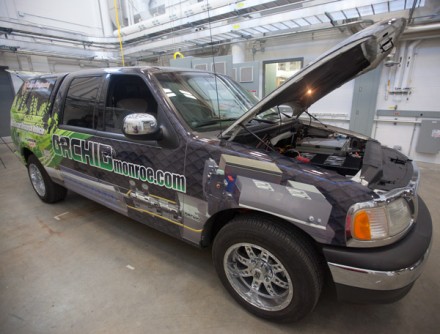
“The truck is quite versatile,” Jahns says. “As time goes by there’s nothing that prevents us from changing any feature in that vehicle – the motor, the controls. Or we could modify its software and test how different algorithms influence driving performance or efficiency.”
According to Jahns, when it comes to the electric vehicle, forward-looking research engineers are still finding plenty of work to do. High priorities include improving battery life and vehicle drivability as well as reducing the cost of the electric vehicle so that it can compete with conventional gasoline engines.
In addition, Jahns points out that large vehicles that routinely do a lot of starting and stopping – i.e., delivery trucks, garbage trucks, city buses – are ideal candidates for electric propulsion systems, since these systems can actually recover up to 80% of the energy extracted while slowing down.
“Try as we might,” Jahns says, “we haven’t yet figured out a way to pump gas back into a tank.”

